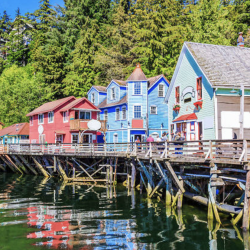When we think of hotel stays, we often envision comfort, relaxation, and convenience. However, amidst the luxury and hospitality, there lies a hidden risk that threatens the safety of guests: falls. Accidental falls can occur in any environment, but hotels present unique challenges due to their varied layouts, high traffic areas, and diverse clientele. Recognizing this, hotels should prioritize the implementation of a comprehensive Fall Prevention Program to mitigate risks and ensure the safety and well-being of their guests. In this article, we delve into the importance of such programs, their potential benefits, and strategies for effective implementation.
Understanding the Scope of the Issue
Accidental falls are a leading cause of injury and even fatalities worldwide, affecting individuals of all ages. Within the hospitality industry, hotels face particular challenges in preventing falls due to factors such as:
Varied Environments: Hotels encompass a wide range of spaces, from lobbies and corridors to guest rooms and recreational areas. Each area presents unique hazards that require tailored prevention strategies.
High Traffic Areas: The constant influx of guests, staff, and service providers increases the likelihood of accidents. Crowded spaces and hurried movements can contribute to slips, trips, and falls.
Diverse Clientele: Hotels cater to guests of different ages, mobility levels, and physical abilities. Meeting the needs of this diverse clientele requires proactive measures to address accessibility and safety concerns.
The Importance of Fall Prevention Programs
Implementing a Fall Prevention Program goes beyond mere compliance with safety regulations; it reflects a commitment to guest well-being and risk management. Here’s why hotels should prioritize such programs:
Guest Safety and Satisfaction: Ensuring a safe environment enhances guest satisfaction and loyalty. Guests are more likely to return to establishments where they feel secure and cared for.
Legal and Financial Implications: Accidents resulting from falls can lead to costly litigation, compensation claims, and damage to a hotel’s reputation. A proactive approach to safety can mitigate these risks and safeguard the hotel’s interests.
Staff Morale and Productivity: A safe workplace promotes employee morale and productivity. By providing training and resources for fall prevention, hotels empower staff to contribute to a culture of safety and professionalism.
Community Reputation: Hotels are integral members of their communities, and their reputation extends beyond their physical premises. Demonstrating a commitment to safety not only benefits guests but also enhances the hotel’s standing in the community.
Components of an Effective Fall Prevention Program
A comprehensive Fall Prevention Program should encompass the following components:
Risk Assessment: Identify potential hazards within the hotel premises through regular inspections and risk assessments. Pay particular attention to areas with high foot traffic, slippery surfaces, uneven terrain, and inadequate lighting.
Staff Training: Educate staff members on fall prevention techniques, hazard recognition, and emergency response procedures. Provide training sessions tailored to different roles and responsibilities within the hotel, including housekeeping, maintenance, and front desk staff.
Guest Education: Empower guests to take proactive measures to prevent falls by providing informational materials and signage highlighting common hazards and safety tips. Encourage guests to report any safety concerns promptly.
Infrastructure and Maintenance: Maintain a clean, well-lit, and properly maintained environment to minimize fall risks. Address issues such as loose carpets, uneven flooring, slippery surfaces, and inadequate handrails promptly.
Accessibility: Ensure that the hotel premises are accessible to guests with disabilities or mobility limitations. Install ramps, handrails, grab bars, and other accessibility features in accordance with relevant regulations and guidelines.
Conclusion
In conclusion, the implementation of a Fall Prevention Program is essential for hotels to uphold their commitment to guest safety, mitigate legal and financial risks, and foster a culture of professionalism and care. By investing in proactive measures such as risk assessments, staff training, guest education, infrastructure maintenance, and accessibility enhancements, hotels can create safer environments that enhance the overall guest experience. In an industry where reputation and guest satisfaction are paramount, prioritizing fall prevention is not just a prudent business decision but a moral imperative.


